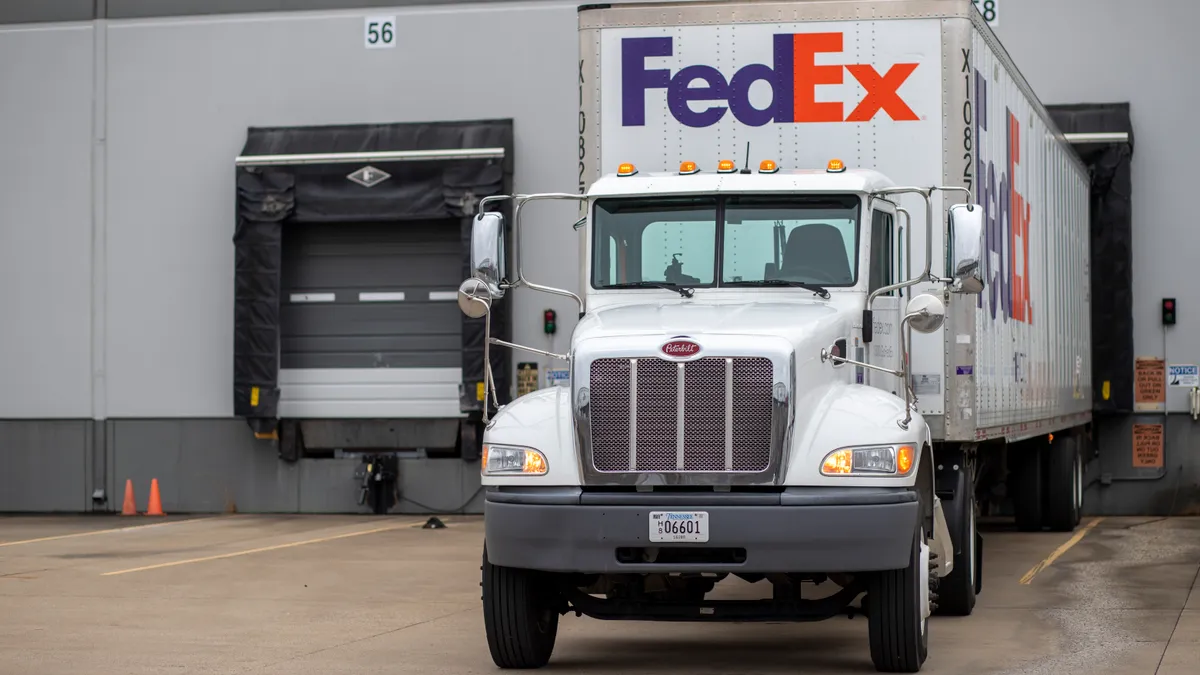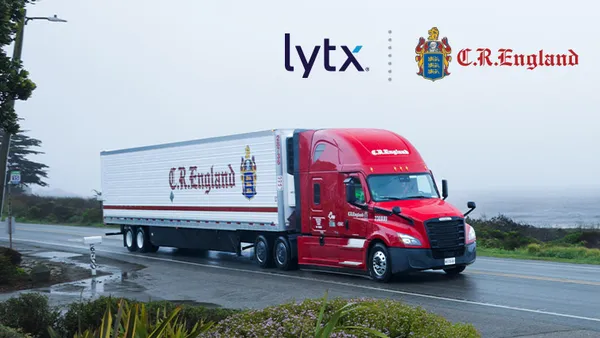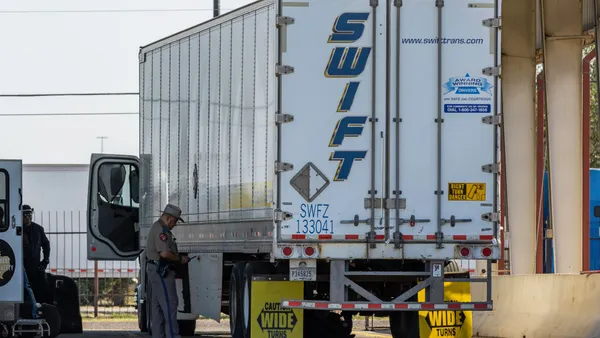Dive Brief:
- Home time is drivers' top concern, WorkHound CEO Max Farrell said Thursday during a webinar on the company's Q3 online feedback survey of drivers. Burnout from long trips and concern about loved ones during the COVID-19 pandemic are increasing drivers' anxiety, Farrell said. Usually equipment and logistics are the top themes mentioned. Farrell said this time, the theme of people came in first. And within that theme, more than 4% of drivers brought up the issue of time as an urgent concern, Farrell said.
- More home time isn't necessarily the solution, but more predictable home time is, Nick Wakefield, USA Truck vice president of human resources, driver recruiting and retention, said during the webinar. "They're frustrated with responsiveness," said Wakefield. "They're wanting answers because they're out there risking their lives."
- People issues came in as another oft-mentioned topic, Farrell said. Conflict with office managers or department employees could lead drivers to leave the fleet, Farrell said.
Dive Insight:
Driver retention stabilized in Q2, but driver turnover spiked in Q3, according to Farrell. And the causes are overall problems with the industry and internal issues with individual carriers. Farrell said his feedback questions seek to find all the reasons to help fleets solve one of the industry's biggest problems, one that Farrell said has led to about an 89% average annual turnover rate for fleets.
The drivers that left 9,000 comments in the Q3 study worked for fleets with as few as 61 trucks to more than 2,000 trucks. And 77% were company drivers, while 23% were owner-operators. The average age of the WorkHound driver was 55, something that transport industry officials have fretted about before. Trucking is older than most industries, according to a 2019 driver shortage report by ATA.
"The median age of over-the-road truck drivers is 46, compared with just 42 for all U.S. workers. Some sectors within the trucking industry have an even higher median age," the report reads. "For example, private fleet drivers have a median age of 57 years old." (The ATA does not track driver retirements by month or year and does not have numerical estimates.)
Having an older workforce means fleets must scramble to find new drivers to replace those who retire, as well as those who quit the industry entirely or leave for other fleets.
"Drivers are hard to find," said Wakefield. "We're turning over every rock to find a qualified driver."
USA Truck has been working with WorkHound to reduce turnover. In August, the two companies said they reduced turnover at USA Truck by 27.8% YoY. Wakefield said the anonymous feedback system that WorkHound uses helped the fleet identify the issues that led to 75% of turnover cases, the companies said.
The number of longtime drivers with good records choosing to stay home with family is of concern to Wakefield, because he fears the industry is not meeting the personal needs of drivers. Some of that longing to be home is related to the coronavirus, Farrell said. Drivers often voiced concern over what would happen if they need time off in case of a family death. Wakefield said he has spoken to industry recruiters and they have all said they are working to reform the time-off structure to try and respond to driver requests.
Comments that were critical of fleet practices in the Q3 responses were stable, Farrell said. So, sometimes it's a "straw that breaks the camel's back" that gets drivers to leave a fleet, or at least consider such a move. Toxic office culture is one such straw, Farrell said, noting one driver told WorkHound that he was choosing to leave over one particular manager, and that he regretted it escalated that much. Another driver mentioned the poor state of the company properties he drove to, remarking on the trash and used surgical masks strewn across the lot.
Company culture is vital, and office employees should work toward empathy for drivers, said Wakefield. Initially, USA Truck employees were concerned about the "fire hose" of complaints they might encounter from drivers. Instead, USA Truck office employees found the experience of talking to drivers beneficial to the company.
"It's now a monthly thing we are doing across departments," said Wakefield. "It's changing the game."












